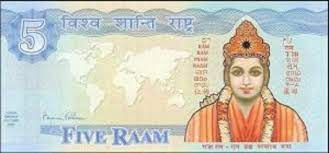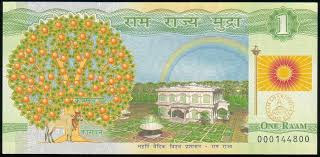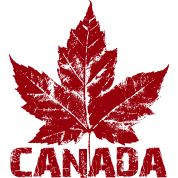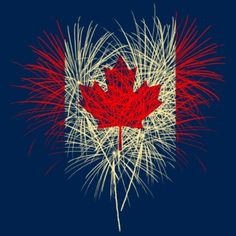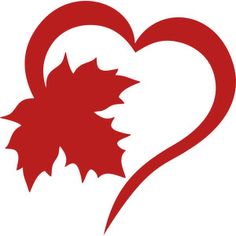What is Currency Ram / Raam Mudra?
Currency Ram Encyclopedia (Raam Mudra)
Raam was launched by Global Nations for World Peace in October
2001. It issued a currency called "Raam", which was led by
neuroscientist Tony Nader. GCWP is a US-based non-profit organization
headquartered in Maharishi Vedic, Iowa. Rams are issued in three denominations,
1, 5 and 10 rams. The currency Raam Mudra was accepted in parts of the Netherlands and the
United States at the time. Benjamin Feldman, finance minister of the Maharishi
movement, said Raam could prove useful in eradicating poverty. He insists that
its use in agriculture should be encouraged.
Rama is often referred to as the Link of World Peace. Maharishi's movement declared that it would promote world peace, balance the economy and eradicate poverty at the same time.
What is the value of Currency Ram?
In Europe currency Ram Mudra corresponds to ten euros, while in the USA it is ten dollars. The group used the currency to build the Peace Palace.
Although the currency was first issued almost 20 years ago, its current state of circulation is unclear as there is no updated information about it online.
There is currently no information that it is widely used
outside of the Vedic cities where it is used.
What Type of Currency is Ram Mudra?
The Ram is a bearer bond and local currency issued by world
peace countries around the world. It is designed to develop agricultural
projects and eradicate poverty in third world countries.
As of 2003, it had limited acceptance in some European and
American cities. The currency is already in use in Iowa and has been approved
in the Netherlands, where more than 100 Dutch stores, department store chains
in 30 Dutch towns and cities use the banknote with a fixed exchange rate of 10 EUR/Rhm.
In what denominations Ram is Issued?
Raam are issued in denominations of 1, 5 and 10 Raam, in
Europe 1 Raam is 10 euros and in the US 1 Raam is 10 dollars. Raam's notes are
printed by Joh. Enschede.
In 2002, Maharishi
Vedic Mayor Bob Wynn estimated that Raam was worth $40,000 in circulation.
Ram differs from other complementary currencies in that it
focuses on exporting products rather than improving local circulation for the benefit
of local residents.
According to the Global National Finance Ministers for World Peace, Raam is usable for agricultural projects in developing countries.
James Dorn, a currency expert at the CATO Institute, cast doubt on the viability of the plan, saying other economic approaches would be a better way to build a network of collective farms.
How does Raam earn Interest?
Raam, also a bearer bond, earns a total of 3% interest after five years
(0.6% simple interest per annum), according to the issuer.
Since 2003, under Dutch law, Raam has been used in more than
100 stores in the Netherlands alongside the euro. Raam can be exchanged at
Fortis Bank in Reermond, Netherlands.
How many Ram Bank notes have been in circulation?
The Dutch central bank estimated that there were around
100,000 ram banknotes in circulation in 2003.
It is also limited to cities in Iowa known as Maharishi
Vedic City and Fairfield. According to Maharishi Global Financing, an agreement
was reached in 2004 with a farmers' association in South America and
traditional leaders in Africa to begin using Raam in agricultural development
projects.
Is Raam not a regular fiat currency or legal tender?
Raam is actually a bearer bond in financial
terms, also known as local currency. Bearer bonds are more of an investment
vehicle than conventional bonds.
Unlike the national common currency, which is accepted by
everyone in the country, it may not be accepted by everyone when a bearer bond
is offered in a transaction.
The bond is redeemable at Fortis Bank in Roermond,
Netherlands and Maharishi Vedic City, Iowa, information not available
elsewhere.
Bearer bonds are usually issued by companies or governments
to raise funds, so they are essentially a debt instrument. But the investor of
the bond is not registered, so the person who actually owns the bond becomes
the owner. Therefore, it can be used as a currency for exchanging money. But
it's still not a regular currency, and bonds usually earn interest because it's
a debt instrument.
Although it is priced at €10, it is not a regular currency because it is not legal tender issued by a state or central bank. Also, it is not widely used as a currency.
Why is the value of currency Raam is fixed?
Raam is also not traded on the foreign exchange
market and its valuation against the dollar and the euro is fixed.
Is Raam the most expensive currency in the World?
Another fact is that although the Raam was worth $10 and
€10, a bearer bond was issued with a higher value. So it is not the most
expensive bearer bond either. Therefore, it is not a common currency, nor can
it be called the most expensive currency in the world.
World Peace Global nation has sought to gain sovereign status by acquiring land and establishing independent city-states such as the Vatican.
They tried to buy land from several countries, but none of them agreed
to sell them land to create an independent country.
How can the currency Ram become a regular Legal tender?
If the GCWP can create a sovereign state, then it will be
able to create a central bank whose currency, the Raam, will be given the
status of common fiat money or legal tender.
What is the other name for currency Raam?
The other name for currency Raam is Raam Mudra.
Share this for All to Know >>


